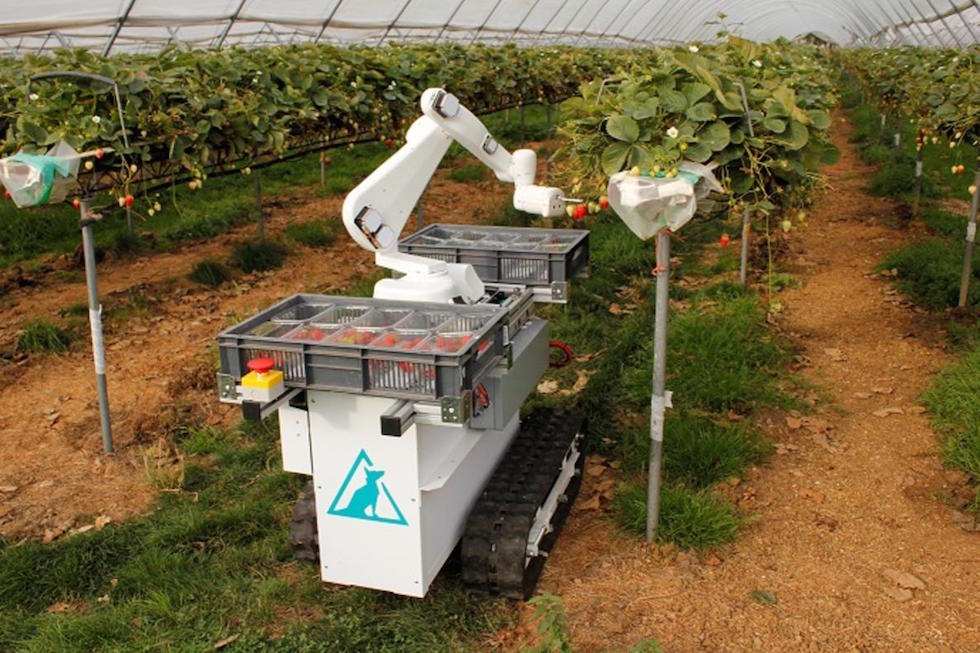Red harvest: robot farmers find sweet spot for strawberries
Intelligent robot strawberry farmers, capable of travelling up and down fields monitoring crops, are being developed in the UK.

Dogtooth Technologies, a start-up company based near Cambridge, is developing autonomous robots designed to harvest soft fruits such as strawberries.
The company tested its first prototype robot in the field in the summer of 2016, and is already working on an improved version. Five of these second generation robots are due to be operating on a farm this summer.
Now, in an EPSRC-funded project, known as Vesca, the company is working with researchers at the National Institute of Agricultural Botany in Cambridge to develop advanced computer vision and motion planning systems, to enable the robots to more efficiently locate fruit and determine their quality and suitability for picking.
The team will do this by improving the robots' machine learning algorithms. This will enable them to make better decisions about how to approach target fruit, and whether to pick them or not. This should result in an increased pick rate of saleable fruit, whilst minimising waste.
Register now to continue reading
Thanks for visiting The Engineer. You’ve now reached your monthly limit of news stories. Register for free to unlock unlimited access to all of our news coverage, as well as premium content including opinion, in-depth features and special reports.
Benefits of registering
-
In-depth insights and coverage of key emerging trends
-
Unrestricted access to special reports throughout the year
-
Daily technology news delivered straight to your inbox










Water Sector Talent Exodus Could Cripple The Sector
Well let´s do a little experiment. My last (10.4.25) half-yearly water/waste water bill from Severn Trent was £98.29. How much does not-for-profit Dŵr...